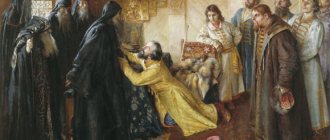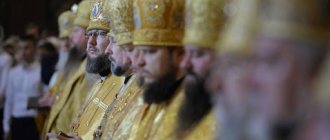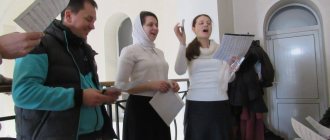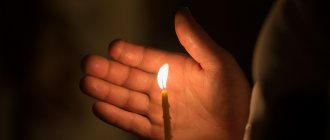Patriarch Kirill is perhaps the second most popular person in the country after President Vladimir Putin. He is the head of the Russian Orthodox Church and is a role model for all Christian believers. That is why everyone's attention is focused on his life. The news and newspapers constantly talk and write about the patriarch. And most of all everyone is interested in how much he earns and what property he owns. Journalists conducted their own investigation and found out how rich he is and what kind of wealth he owns as of 2022.
A few words about Patriarch Kirill
His name in the world is Vladimir Mikhailovich Gundyaev. He was born on November 20, 1946 in Leningrad. Currently, the head of the Russian Orthodox Church lives in Moscow. He has an older brother Nikolai and a younger sister Elena. It is known that Vladimir is fond of sports and is the author of a large number of religious books.
Vladimir came to the church thanks to his father, who was the rector of the Church of the Smolensk Icon of the Mother of God. After graduating from school, he went to study at a theological seminary and then at the academy. In 1969, the guy received a diploma and took monastic vows, receiving the name Kirill.
His career developed successfully and rapidly. After graduating from the academy, he became a member of the Moscow Patriarchate, representing the interests of the Russian Orthodox Church in Geneva. And when the collapse of the USSR occurred, his reputation literally skyrocketed.
Gundyaev took office as patriarch on February 1, 2009. During this time, he did a lot for the Russian Orthodox Church, defending its interests not only in the Russian Federation, but also beyond its borders. Last year he turned 74 years old. He is well and in good health and continues to perform his duties.
Adding wood ash to the soil: how to prepare a greenhouse for the summer season
Harmful to health: why you can’t cook with hot tap water
Yorkshire Terrier and Labrador at risk: which dogs are susceptible to obesity
The most influential in the Russian Orthodox Church Ilya Zhegulev - about the main characters of the Russian Orthodox Church
This message (material) was created and (or) distributed by a foreign media outlet performing the functions of a foreign agent, and (or) a Russian legal entity performing the functions of a foreign agent.
We need your help. Please support Meduza.
Photo: Sergey Bobylev / TASS / Scanpix
Attention! This text was first published in November 2015. Two priests of the Russian Orthodox Church discussed in the material died in 2020 - Archpriest Vsevolod Chaplin and Archpriest Dmitry Smirnov.
Since ascending the throne almost seven years ago, Patriarch Kirill has noticeably changed the Russian Orthodox Church: under him, it has become a religious branch of government. Kirill carried out an administrative reform in the Russian Orthodox Church, which clearly resembles Vladimir Putin’s transformations in the political system of the Russian Federation. Kirill got rid of the most influential people of the era of Alexy II, but increased the number of loyal bishops by a third - now at the Council of Bishops there is virtually no one to oppose the patriarch and his associates. Like Putin, Kirill has a close circle on which he relies, there are people involved in financial management, and there are oppositionists who are going through hard times. Meduza special correspondent Ilya Zhegulev talks about the main characters of the Russian Orthodox Church.
Metropolitan of St. Petersburg and Ladoga Barsanuphius (Anatoly Sudakov)
Metropolitan Barsanuphius of St. Petersburg and Ladoga is the second most influential person in the Russian Orthodox Church. In 2014, he became the ruling bishop of the St. Petersburg diocese and head of the St. Petersburg Metropolis. He combines these posts with the position of manager of the affairs of the Moscow Patriarchate. Like many Russian officials, Barsanuphius lives in two cities - Moscow and St. Petersburg.
Anatoly Sudakov took up church activities immediately after serving in the army (1973–1975), which he served in the German Democratic Republic in the tank forces. Before his appointment to St. Petersburg, he led the diocese in Mordovia. In this region, he was remembered for the fact that he beautifully and sincerely congratulated the local department of the Federal Penitentiary Service on its 80th anniversary. It looked provocative: priests were also imprisoned in Mordovian camps during Soviet times.
Be that as it may, Mordovia is now the main supplier of church personnel for St. Petersburg. Local churchmen complain: while in Moscow the St. Petersburg patriarch is in power (Kirill was born in Leningrad), in St. Petersburg power is in the hands of the Mordovians, whom Barsanuphius’ opponents call “Mordorians.”
Barsanuphius managed to remove himself from his post as rector of one of the main churches of the city - the Transfiguration Cathedral. The metropolitan’s bureaucratic influence can be judged by the fact that the rector he dismissed, 75-year-old Nikolai Gundyaev, is the elder brother of Patriarch Kirill. In 2014, Barsanuphius replaced him with his own man: the current rector of the temple, Nikolai Bryndin, also previously served in Mordovia. In addition to Gundyaev, Barsanuphius replaced several more rectors of churches in St. Petersburg; Each castling became an event for the city - before this, abbots had never been changed so quickly.
Inauguration ceremony of the re-elected Governor of St. Petersburg Georgy Poltavchenko
Photo: Yuri Belinsky / TASS / Scanpix
Barsanuphius gets along well with officials. He was generally lucky with the city leadership. Governor Georgy Poltavchenko is a deeply religious person and the main trustee of the public Orthodox organization “Russian Athonite Society”. Several other associates of the governor are members of this society. In January 2014, St. Petersburg state unitary enterprises responsible for winter cleaning of the city donated about 17 million rubles to the fund for the restoration of the Athos St. Panteleimon Monastery. Of these, nine million were transferred by the State Unitary Enterprise “Center” - the largest utility company in the city, showing multimillion-dollar losses.
The Church, represented by Barsanuphius, tried to gain control over St. Isaac's Cathedral, but in the end it still retained the status of a museum. However, many representatives of the St. Petersburg intelligentsia would not be against Barsanuphius’ departure to Moscow. “This city survived the blockade and, I think, will survive you!” — Nikolai Burov, director of the St. Isaac’s Cathedral museum-monument and former head of the St. Petersburg Culture Committee, addressed Metropolitan Barsanuphius with these words during the Easter reception.
Metropolitan Hilarion (Alfeev)
Metropolitan Hilarion is one of Patriarch Kirill’s close associates. He is the Chairman of the Department of External Church Relations of the Moscow Patriarchate; this position was held by the patriarch himself before ascending the throne. However, in this post, Kirill was an influential and independent player, while Hilarion was a quiet diplomat. “Relations between the church and the state are now being built quite constructively,” he said, for example, on the air of the Posner program. “They are based on two principles: non-interference of the Church and the state in each other’s internal affairs and cooperation of the Church and the state where it seems useful to both parties.”
Alfeev wanted to become a musician and composer. Having graduated from Gnesinka in violin and composition, the future metropolitan entered the conservatory in the composition department in 1984. But that same year he was drafted into the army; served, became a monk. He did not give up music, and is, perhaps, one of the most famous church composers. His most frequently performed work, “St. Matthew Passion,” was performed in cities in Europe, Australia, Canada and the United States.
5th Moscow Christmas Festival of Sacred Music. Conductor: Metropolitan Hilarion (Alfeev)
Photo: Dmitry Korobeinikov / PhotoXPress
Metropolitan Kirill drew attention to the young hieromonk from the Moscow intelligentsia back in 1989, when Alfeev was studying at the Moscow Theological Academy. He went on an internship to Oxford, where he met Metropolitan Anthony of Sourozh, one of the most influential figures of the Russian Orthodox Church abroad, who for some time was even considered a possible successor to Alexy II. Anthony liked the young man so much that he asked the Russian Orthodox Church to appoint him as his assistant.
In the early 2000s, Hilarion was given the rank of bishop, and he was again sent to Great Britain. But the trip did not go well: Hilarion tried to strictly implement the policy of the Moscow Patriarchate - this concerned both personnel appointments and theological issues. British churchmen literally rebelled against him. Until recently, Metropolitan Anthony, who favored Hilarion, already directly demanded that he “conform to the ideals that were developed here before him for 53 years.” In mid-2002, Hilarion was recalled to Moscow. The foreign policy of the Russian Orthodox Church as a whole became much softer after this incident.
The conservative wing of the Russian Orthodox Church considers Hilarion, rather, a reformer; despite this, he criticizes Europe in accordance with the general line of the Church. In particular, he recently stated that the “so-called sexual revolution” has led to a spiritual crisis in Europe, because of which today “increasingly, the family is seen as a union of two persons, regardless of their gender, while a person can now choose his own gender according to personal taste."
On November 25, the day after the Su-24 incident, Hilarion canceled his trip to Istanbul, where the presentation of the Turkish translation of Alexy II’s book “Freedom and Responsibility” was to take place. The reasons for canceling the trip were not officially announced.
Abbot of the Sretensky Monastery Tikhon (Georgy Shevkunov)
Perhaps he is the only one in the hierarchy of top officials of the Russian Orthodox Church whose influence is growing not at the will of Kirill, but even, perhaps, in spite of it - at the request of the President of Russia. The abbot of the Sretensky Monastery in the center of Moscow has been called the personal confessor of Vladimir Putin for many years, and he has never denied this. He has his own relations with government officials - bypassing the patriarch, and Kirill himself does not risk conflict with him.
Shevkunov is the editor-in-chief of the most visited Orthodox media, Pravoslavie.ru, and he wrote the most popular modern Orthodox book, Unholy Saints, which has sold two million copies. He maintains a peasant farm and heads the well-equipped Sretensky Theological Seminary. He is building a huge Cathedral of the New Martyrs on Lubyanka. Urban defenders and architectural critics pointed out that the building with a total area of more than ten thousand square meters and a height of 55 meters would be “comparable to a cathedral church of a metropolitan scale,” while it is planned to be built in a “relatively small city monastery.” Thus, the new cathedral of the Sretensky Monastery will be higher than the Assumption Cathedral in the Moscow Kremlin, once the main temple of Moscow Rus' - it is only 45 meters in height.
Archimandrite Tikhon (Shevkunov) at the presentation of the book “Unholy Saints” as part of the XXIV Moscow International Book Fair at the All-Russian Exhibition Center
Photo: Maxim Shemetov / TASS / Scanpix
Shevkunov knows how to make money. The Sretensky Monastery Choir successfully tours and regularly gives concerts at the largest concert venues in Moscow. In addition, Tikhon has one of the largest Orthodox publishing houses and a network of bookstores.
Shevkunov has long gone beyond the scope of church activities; he was the initiator of resonant and completely secular events. For example, historical interactive exhibitions organized with his participation in the Moscow Manege popularly tell about the history of Russia. The last one is especially noteworthy - “My story. XX century". It is dedicated to the events of 1930-1940 and repeatedly mentions the good that was done under Stalin. Critics called the exhibition “an apology for Orthodox Stalinism.”
Another notable event in which Shevkunov was involved was the release of the film “The Death of the Empire. Byzantine lesson" in 2008. It was presented as documentary and historical, dedicated to the anniversary of the fall of Constantinople. True, many decided that Byzantium was used as a backdrop to convey ideas that clearly referred to modernity. Here is the quote: “A huge problem of the Byzantine state during the period of decline was the frequent change of policy directions. What is called the lack of stability and continuity of state power. With the change of emperor, the direction of life of the empire often radically changed. This extremely weakened the entire country and severely exhausted the people. Political stability is one of the main conditions for a strong state.” Of course, the film was released in prime time and caused widespread discussion.
In October 2015, Tikhon was promoted - by order of the patriarch, he was appointed manager of the Western Vicariate of Moscow. But the main thing is that he became a bishop. Rumors that this rank awaited him had been circulating for ten years. With the promotion, new rumors appeared: the only strong and independent person in Kirill’s circle, connected with the country’s top officials, is considered the most realistic candidate to succeed the patriarch.
Chairman of the Synodal Department for Interaction between Church and Society Vsevolod Chaplin
Vsevolod Chaplin, who is now called the main ideologist of the Russian Orthodox Church, from a young age - from the early 1990s - worked under Metropolitan Kirill, and was even his speechwriter. Having ascended the throne, Kirill made Chaplin chairman of the Synodal Department of the Moscow Patriarchate for interaction between the Church and society. This interaction to this day does not go smoothly and often causes controversy: by and large, almost all criticism of the Russian Orthodox Church was most often a response to certain statements by Chaplin.
Chaplin alternately had a positive assessment of Stalin, who, in his opinion, “restored the place of the Russian Orthodox Church in the life of Russia”; then he blasted the singer Madonna, who “needs psychological help,” to smithereens. Chaplin proposed banning Vladimir Nabokov's novel Lolita; accused women of provoking men to rape by the way they dress; he even pondered the need for a special Russian dress code.
Chaplin desperately defends the right of churches to expensive decorations, and priests to expensive cars. “If someone gives the patriarch a vestment, an icon, a car, a watch, this is a manifestation of love for the patriarch, which is completely natural. Why did they suddenly begin to persistently convince us that we should be ashamed of this and tear our hair out over it?” - he says. Thanks to him, the church began to be perceived as a rather aggressive structure, actively interfering in secular life.
Chaplin wrote and published, under the pseudonym Aron Shemeier, a dystopia about a neuter man named Machaut, which he himself proudly told reporters about. The book was about Russia, which fell apart under the influence of the vicious influence of the West.
Chairman of the Synodal Department of the Moscow Patriarchate for interaction between Church and society Vsevolod Chaplin
Photo: Alexey Filippov / RIA Novosti / Scanpix
Like Tikhon, Chaplin has his own loyal relationship with the authorities. And he does not deny himself the opportunity to once again speak out about this or that decision of officials - of course, in a positive way. For example, about the castling of Putin and Medvedev, Chaplin said the following: “When else in the history of Russia has the highest power in the state been transferred so peacefully, with dignity, honestly, in a friendly manner? This is a true example of kindness and morality in politics.”
In the summer of 2015, on Echo of Moscow, Chaplin said that a society living in peace, tranquility and satiety is a society abandoned by God, and suffering benefits people: “Peace in Russia, thank God, will not last long.” When they told him that he had just thanked God that there would be a war, Chaplin replied: “If people are used to living too calmly, it is better that there be.” The leader of the Aquarium group, Boris Grebenshchikov, responded to this statement. “I read in the newspapers that the Orthodox Church itself, in the person of its Grand Secretary, says that Russia needs war,” he said directly at the concert. - What a bastard! Thank God that there are many priests from Russia who say: we don’t think so.”
Chaplin was the first of the high-ranking hierarchs to make it clear to the right-wing religious fringe that their opinion matters for the Church and society. Chaplin has long been promoting the famous fighter for the salvation of Russia, the head of the Association of Orthodox Experts, Kirill Frolov. In Orthodox circles they say that Orthodox actionist Dmitry Enteo is also Chaplin’s creation. Judging by the fact that Chaplin continues to speak out scandalously on every occasion (new: he called for the implementation of “the ideals of Holy Rus', the Caliphate and the USSR” in Russia), the patriarch is pleased with him. It can be assumed that Chaplin, not occupying the highest position, voices what the patriarch cannot afford due to his status. Perhaps this is why Chaplin has not yet been made a bishop.
Chairman of the Synodal Information Department of the Russian Orthodox Church Vladimir Legoyda
The current head of the “Ministry of Propaganda” of the Russian Orthodox Church - Chairman of the Synodal Information Department Vladimir Legoida - comes from MGIMO. Legoida trained in the USA and became a believer there after becoming acquainted with the works of the American hieromonk Seraphim (Rose) and his followers. Returning to Russia, Legoida invented the magazine “Foma,” which later grew into almost the main publication about Orthodoxy in the country. It was then that he met Kirill. The future patriarch really liked the magazine covers with stars who told how they felt better after they entered the Orthodox path.
Having become patriarch, Kirill reformed the press service, creating instead the real Ministry of Information Policy of the Russian Orthodox Church - the Synodal Information Department. Legoyda, who turned out to be the first secular person in the leadership of the Russian Orthodox Church, was appointed its leader. Legoida immediately managed to prove that he knows how to find sponsors for information projects. In addition, he built relationships with the Orthodox media environment - Russian Orthodox media gradually became part of the coherent structure of the Synodal Information Department. Every head of Orthodox media is looking for friendship with Legoyda. For them, he is like an official of the Presidential Administration for Russian pro-state media. Few people dare to take risks by ignoring partnerships with Legoyda. Legoida emphasizes its closeness to Radio Vera, TV channels Spas and Tsargrad, and also holds a festival of Orthodox journalists every two years.
Chairman of the Synodal Information Department of the Moscow Patriarchate Vladimir Legoida and head of the press service of the Patriarch of Moscow and All Rus' Alexander Volkov
Photo: Nikolay Galkin / TASS / Scanpix
Head of the patriarch's press service and his personal press secretary Alexander Volkov
The youngest of all the patriarch's close associates and, despite his position, the most private. From the age of thirteen he served as an altar boy in the Church of the Holy Martyr Tatiana at Moscow State University. There, at the philological department of Moscow State University, I went to study, while simultaneously serving in the same church. Having not yet graduated from the faculty, he got a job as a freelance employee of the Educational Committee of the Russian Orthodox Church, and wrote his diploma on the topic “Treatise of Patriarch Photius “On the Holy Spirit”. Translation and philological commentary."
After university, Volkov joined the army, which in 2004 cannot be called a typical story. Served in the Naval Space Forces. The unit in Kaliningrad, in which the future deacon served, was engaged in secret space measurements and was called the “Separate Floating Measuring Complex.”
After the army, Volkov was enrolled in the staff of the Tatian Temple and given the rank of deacon. A year later, he went to work in the press service of the Moscow Patriarchate, where he was called by Vladimir Vigilyansky, who headed it for seven years. Under Patriarch Kirill, the press service of the patriarchate was renamed the press service of the patriarch, and the Synodal Information Department of Vladimir Legoida began to provide information support for all activities of the Russian Orthodox Church. The patriarch's press service quickly got into a loud scandal: they erased the patriarch's expensive watch in the photo. After this, Vigilyansky was dismissed, and 30-year-old Volkov became head of the press service.
A year ago, Volkov began to be called simply the press secretary of Patriarch Kirill: since then, everything connected personally with the head of the Russian Orthodox Church has always been explained by him. Volkov accompanies Kirill on all trips. Once he had to literally cover the patriarch with himself when he was attacked by half-naked activists of the Femen movement. Volkov, and not Legoyda, as happened before, interpreted the words of the patriarch, who was accused of justifying the Stalinist regime. Thus, Volkov is now fulfilling the role that Dmitry Peskov plays under Vladimir Putin; and he does it quite successfully.
Dmitry Smirnov, archpriest, rector of the Church of St. Mitrophan of Voronezh on Khutorskaya and seven other churches in Moscow and the region
Dmitry Smirnov is perhaps one of the most scandalous church figures, but despite all his antics, he was never condemned by the leadership of the Church.
Smirnov became the rector of the Mitrofan Temple back in 1991, and in the 1990s he became famous for his sermons. For a long time he was one of the most popular Moscow confessors, and as a result, eight churches were under his leadership; once he was even called “the abbot of all Moscow.” On behalf of the Moscow clergy, he spoke a word over the tomb of Alexy II. Now Smirnov actively appears on television and radio, maintains a blog and is considered the most popular conservative priest.
Smirnov is the main traditionalist in matters of family, motherhood and childhood. He, albeit in a very mild form, condemned Vladimir Putin for divorcing his wife Lyudmila.
In his parishes, as he himself claims, “the birth rate is like in Bangladesh.” Smirnov is one of the main and loudest fighters against abortion, LGBT, and juvenile justice. His point of view is not the point of view of the Russian Orthodox Church, but has more than once caused the most heated public discussions. Thus, in October 2014, Smirnov proposed banning access to the Internet and computer games to persons under 21 years of age. Smirnov actively spoke out against Soviet power, Fr. Like Chaplin, he boldly defends the priests' right to wealth. “A priest must be content with a five-room apartment and a servant’s room. If a priest has two planes, and he makes, say, five trips a year, then a second plane is, of course, overkill,” he insists.
Smirnov currently does not have his own relations with the authorities. Although for several years he headed the Synodal Department for Relations with the Armed Forces and the Penitentiary System. All this time, Smirnov was actively introducing the institution of regimental priests; Moreover, he pointed out that before the revolution they were entitled to allowances at the level of captains - and in the modern army it would be nice to consolidate this position. His passion for Orthodoxy in the army did not stop him from asking for a deferment for graduates of religious institutions. Smirnov compared their conscription into the army with “the era of persecution of the church.”
At the same time, Smirnov also spoke out on secular political topics, for example, he criticized the Russian electoral system, considering it “a pure scam.” In his opinion, an “elective monarchy” is preferable for Russia, and the monarch should be chosen by electors.
The shortest interview in the world
wwwsilverru
Among his latest acts was a surprise and poorly motivated attack on the Silver Rain radio station. In July 2015, Smirnov and at least a hundred of his supporters stormed the site of the celebration of the 20th anniversary of Silver Rain and beat several people there. The archpriest himself took part in a fight with producer and presenter Mikhail Kozyrev. The Russian Orthodox Church and law enforcement agencies did not react to this incident in any way.
Protodeacon Andrey Kuraev
Andrei Kuraev is not at all integrated into the vertical of power of the Russian Orthodox Church, although he was once the most popular church figure, standing at the level of the patriarch in terms of mentions. Throughout the 1990s, Kuraev was the church's main missionary. He was the first to write in modern language about the Church and about God. Kuraev is an erudite and intellectual, capable of debates on any topic. His books sold millions of copies, he traveled all over the country giving lectures, and even performed at rock concerts of the Alice group.
During the so-called "pre-election campaign" in the winter of 2008–2009, Kuraev was one of Kirill's most ardent supporters; he was considered one of the architects of his victory. After this, Deacon Kuraev was promoted to protodeacon, and it was even expected that he would become a bishop. Kuraev was assigned to write a textbook on the Fundamentals of Orthodox Culture when the subject had just begun to be introduced in schools (and to this day, most schools teach from his textbook).
Protodeacon Andrey Kuraev in Moscow. July 9, 2014
Photo: Pavel Smertin / TASS / Scanpix
However, Kuraev fell into disgrace. To put it in secular language, he “lost control” - he began to talk about the problems of the Russian Orthodox Church in his characteristic provocative and harsh form; and even to protect those who are very disliked in the Church. Here’s what, for example, Kuraev wrote after reading a letter from Pussy Riot member Nadezhda Tolokonnikova from a Mordovian colony: “The letter is not about the special suffering of the author, but about the suffering of thousands of imprisoned women. The man is screaming about pain and humiliation... As for my attitude towards the author of the letter, I will say this: as disgusting as Tolokonnikova’s life was to me before her arrest, her behavior after it seems so worthy to me.”
Kuraev quickly gained a reputation as the main human rights activist in the Russian Orthodox Church system. He reacted harshly to any injustice, and it instantly became discussed news. It is not surprising that the disgrace became deeper and deeper.
Kuraev could not be forgiven for the campaign to expose, in his language, the “blue lobby” in the Church. Thanks to Kuraev, all of Russia learned that at the Kazan Theological Seminary, students complained of sexual harassment by one of the leaders of this educational institution. This exposure cost the protodeacon his dismissal from the Moscow Theological Academy and Moscow State University.
However, these events did not stop Kuraev: he continues to speak out on the widest possible range of issues - from foreign policy to criticism of hierarchs. He does this on his LiveJournal, thanks to which he resembles the figures of the Russian non-systemic opposition, which has only the Internet as a platform for speeches.
Official income
Patriarch Kirill's salary is 480,000 rubles per year. In addition, he owns an apartment in Moscow, donated by former President Yeltsin. As the clergyman said in one of his interviews, priests in Russian cities receive from 20 to 40 thousand rubles a month. But in the regions and villages their salary is even less.
And here one very interesting situation arises, because, according to unofficial information, Vladimir Gundyaev’s fortune is about 10 billion dollars. How, with such a salary, was he able to amass such a huge fortune, which not all businessmen have? After all, most priests live not only in poverty, but barely make ends meet.
Achilles
Views: 9,363
As you know, several years ago, Patriarch Kirill launched a process of endless, as it already seems, fragmentation of dioceses - supposedly to “bring the episcopate closer to the people”, in reality - to increase collections into the treasury of the patriarchate.
Many dioceses have already been split into 3-4, and some - into 5 and even 6 parts, filling them with bishops, diocesan administrators, eparchs and deans who preside over two or three subordinate priests. Closeness to the people is still not particularly visible, but the abbots are simply exhausted from the regularly increasing amount of contributions to the diocese (for example, the notorious young Bishop of Yenisei and Lesosibirsk Ignatius (Golinchenko) , who not so long ago took over the department, has already raised his parishes His contribution was doubled - and it is clear that he did this not of his own free will, but on the “fraternal advice” from above, from the Krasnoyarsk Metropolitan, because, I suppose, contributions to the Patriarchate from the metropolises also increased).
So, this division into mini-dioceses sometimes reaches the point of absurdity, as can be seen from the example of the little-known Naryan-Mar diocese of the Archangel Metropolis. Let's get to know this diocese better.
The main page of the website of the “northernmost diocese of Russia ,” as the subtitle says, greets guests with a quote from the ruling bishop, Bishop Jacob (Tislenko):
“On my report to His Holiness the Patriarch about the plans for the Russian Arctic project, it was written by the hand of the First Hierarch of the Russian Church: “Thank you for your efforts. I agree to give Patriarchal status to the Russian Arctic program. With the help of God, I would be ready to visit Naryan-Mar to lay the foundation stone for the cathedral...”
I believe: what is blessed by the Patriarch will be fulfilled if, with God’s cooperation, we all become co-workers in the revival of the Russian Arctic, which Holy Rus' left us as its heritage - a resurgent Russia.”
Also on the main page of the site it is reported that the diocese was created in 2011 and includes the “Nenets Autonomous Okrug, the Mezen Deanery (Mezensky District of the Arkhangelsk Region), the Ust-Vash Deanery (Leshukonsky District of the Arkhangelsk Region), the Deanery of the Arctic Archipelagos: Novaya Zemlya, Franz Josef Land."
How many priests care for such a large territory? “Clergy” section , there are 5 (five) priests on the diocese staff, 2 (two) of them have been banned for several years, and another one died more than four years ago, but continues to be “listed”... Once again, syllable by syllable: diocese, which has a bishop and two - according to the official information on the site - serving priests. And four deaneries...
True, the news reports that in June 2019 the bishop ordained another priest, but no information about him appeared in the “Clergy” section.
It turned out to be impossible to count the number of parishes in the diocese - such information simply does not exist. Only in the section “Schedule of services” is the presence of a cathedral in Naryan-Mar and a temple in the village of Iskateley mentioned.
But in the “Parishes” section, instead of a list of parishes, for some reason there are links to two articles, apparently the most important for the Orthodox of the diocese: “Official explanation of the DECR about the upcoming Pan-Orthodox Council” and Archpriest Andrei Novikov “Necessary explanations in connection with the attacks of Protodeacon A. Kuraev on the Patriarch and the Church."
There is no information on the composition of diocesan departments or at least their availability on the website.
But on the website in the “Miscellaneous” section there is a confusing selection of information about some “shaman Kolya”; the text often mentions St. Petersburg Orthodox MP Vitaly Milonov.
The last diocesan meeting took place on June 14, 2022; in addition to the bishop, it was attended by two priests and several laymen, mostly elderly women.
Diocesan Assembly
“The topic of the meeting was the consideration of the draft documents “On the secular labor activity of clergy” and “Regulations on church punishments of clergy” prescribed by the Administration of the Moscow Patriarchate. The ruling bishop explained to the clergy and the diocesan assembly the relevance and importance in the life of the Russian Orthodox Church of the adoption of the mentioned documents.”
Gathering the laity so that they listen to information that is absolutely unnecessary for them - well, in principle, the clergy do the same thing at all meetings - they listen to the reading of papers that they can easily read themselves and at home, having received them by e-mail.
Open the “News” .
On December 31 last year, a beautiful calendar for 2020 was published. The last real news before this was from September 9, 2019, reporting that the Bishop of Naryan-Mar served together with other bishops in Solovki.
The local bishop loves to be absent from his workplace, under the pretext of participating in scientific expeditions. (He did this before : “he participated in missionary expeditions to Antarctica (2004, 2009), to Sakhalin and the Kuril Islands (2007, 2009, 2010), to the North Pole (2009), along the Northern Sea Route (2011).”)
For example, the diocesan website provides news dated August 15, 2022 under the pretentious title “The Russian Academy of Sciences and the Russian Orthodox Church the first scientific and theological Arctic expedition .
The material reports that throughout July, Bishop Jacob participated “in an expedition on the research vessel “Akademik Mstislav Keldysh”, conducted by the Institute of Oceanologists named after. Shirshov (RAS) within the northernmost diocese of Russia: the Arctic archipelago of Novaya Zemlya, the Kara Sea."
It turns out that “the expedition actually confirmed the fruitful collaboration of Russian academic science and the Russian Orthodox Church, which was the subject of the meeting of His Holiness the Patriarch of Moscow and All Rus' Kirill in Sarov on July 31 of this year.”
What was the scientific nature of the expedition is explained quite clearly in the material, but about “theology” it is said this way:
“The expedition was in fact the first and very successful experience of modern interaction between academic science and theology, which has not only the prospects for further collaboration, but also the significance of restoring traditions that were interrupted for the well-known reasons for the adoption by the Soviet state of an atheistic ideology, which practically abolished any systemic scientific and theological understanding scientific facts and knowledge accumulated by both Soviet and world science in all areas of natural science. The relevance of an objective approach to the study of the world is determined not by ideological guidelines, whatever they may be, but by the very essence of the spiritual nature of man and the purpose, purpose of human existence.”
In general, you understand. By the way, I’m not really...
However, the theological and practical significance of the expedition was further explained: first, a prayer service was served before the departure of the ship, then several worship crosses were installed on the archipelagos, which, of course, were consecrated by the bishop, he also served several liturgies on the ship, and then even wrote an article for the academic publication "New Earth".
Bishop Jacob against the background of the cross he was consecrating
This is such a curious diocese: practically without clergy, with a dead site, but with a traveling bishop.
True, one thing is not clear: how would some dean or the same Tislenko do worse in this field, but as a missionary hieromonk? Why bother the high authorities, it is important to be called a “diocese” where there is and will not be any basis for this for many years? Or will the light of Orthodoxy shine brighter if every provincial church in the wilderness is called “cathedral”, and a bishop is installed in every village?..
Reference:
Bishop of Naryan-Mar and Mezen Jacob (Tislenko) - b. 1960.
He was tonsured - 1991, hierodeacon - 2001, hieromonk - 2008, bishop - 2012.
Education:
Moscow State University (philologist), MDA, candidate of theological sciences, taught at the MDS.
Author of several books and films on church history.
Photo: www.orthodox-arctica.ru
If you like our work, support us:
Sberbank card : 4276 1600 2495 4340 (Pluzhnikov Alexey Yurievich)
Or using this form, entering any amount:
Tobacco business
It is very strange that a clergyman is engaged in the production of tobacco products. Kirill launched it back in 1993 and, thanks to his entrepreneurial spirit and the support of the Moscow Patriarchate, managed to develop it well. For this purpose, it was even founded, which allowed the import of tobacco from abroad under the guise of humanitarian aid without paying taxes and receiving preferential quotas from the state.
Today, Patriarch Kirill is no longer involved in the import and sale of cigarettes. But there are still products worth about $50 million left in warehouses.
Oil
At one time, Vladimir Gundyaev was one of the co-founders of the Peresvet commercial bank and some other organizations. And since 1996, he has been exporting Russian oil. And oddly enough, he didn't pay taxes for it either. According to official data, in 1997 alone, this business allowed him to earn about $2 billion. It is unknown whether he is engaged in it now.
“Sad and Happy Apple”: creative games for developing children's empathy
Component composition - to help: life hacks for checking the quality of autogas
Saving space and more: why you should love Soviet furniture
State
Here we come to the question that interests everyone. Patriarch Kirill's fortune grew very quickly. In 2004, he had $1.5 billion in his bank account, in 2005 he already owned $5 billion, and as of 2022 he owns several tens of billions. But Patriarch Kirill himself never considered himself rich. In his interviews, he always maintained that the money did not belong to him personally, but to the church. This is due to the fact that the Russian Orthodox Church receives the bulk of its income from donations from parishioners, which amount to millions of dollars a year. In addition, the church annually receives about 370 million rubles from the state treasury in the form of assistance for the restoration of churches, the purchase of necessary utensils, etc. Therefore, the exact size of the fortune is impossible to determine, but, according to unofficial data, it is about 10 billion dollars.
Sacraments of the Christian Church
: Baptism; Confirmation; Repentance - confession; Communion; Priesthood is the sacrament of endowing a clergyman with divine grace through episcopal ordination - the blessing of the Lord; Church Marriage (wedding) - blessing by the church before God, sanctification of marital ties; Unction - blessing of oil.
BISHOP
Bishop (Greek ἐπίσκοπος - overseeing, supervising; from ἐπί - on, with + σκοπέω - I look) in the modern Church is a person who has the third, highest degree of priesthood, otherwise bishop (from Greek αρχι - chief, senior + ἱερεύς - priest) . Originally, in apostolic times, the term “bishop,” as used in the letters of the Apostle Paul, denoted the senior leader of a particular community of followers of Jesus Christ. Bishops oversaw the Christians of a particular city or province, as opposed to the apostles (primarily itinerant preachers). Subsequently, the term takes on a more specific meaning of the highest degree of priesthood - above the deacon and presbyterate. With the advent of various episcopal titles - initially honorary - (archbishop, metropolitan, patriarch), the term in Russian also became a designation for the youngest of them, although it did not lose a more general meaning, for which the term bishop is also used (Greek αρχιερεύς). In the Greek-speaking Churches the general term is usually ιεράρχης, that is, hierarch (“priestly leader”). Jesus Christ himself is called by the Apostle Paul in the Epistle to the Hebrews “High Priest according to the order of Melchizedek forever” - Greek. “ὅπου πρόδρομος ὑπὲρ ἡμῶν εἰσῆλθεν Ἰησοῦς, κατὰ τὴν τάξιν Μελχ " (Εβραίους 6:20)
Bishop in New Testament times
In the original Greek text of the New Testament we find 5 mentions of the word Greek. επίσκοπος: Acts (Acts 20:28); Epistle to the Philippians (Phil.1:1); First Epistle to Timothy (1 Tim. 3:2); Epistle to Titus (Titus 1:7); First Epistle of Peter (1 Peter 2:25). In the First Epistle of the Apostle Peter, Jesus Christ himself is called “the Shepherd and Bishop of your souls” (1 Peter 2.25) - Greek. "τὸν ποιμένα καὶ ἐπίσκοπον τῶν ψυχῶν ὑμῶν."
The office of the bishop in various denominations of the Christian Church Canonical foundations and the role of the bishop in the Church
According to the teachings of both the Orthodox and Catholic Churches, one of the essential signs of the canonical legitimacy and validity of the priesthood in general and episcopacy in particular is their apostolic succession, that is, the acceptance of the priesthood from the one who himself received full power in the Church from the Apostles - through consistent and continuous a number of their successors. Apostolic succession is carried out in the Church through bishops. Episcopal consecration (ordination) must be performed by several bishops, at least two bishops (1st Apostolic Canon), except in special cases. As the high priest, the bishop can perform all sacred rites in his diocese: exclusively he has the right to ordain priests, deacons, and consecrate lower clergy, and consecrate antimensions. The name of the bishop is exalted during divine services in all churches of his diocese. Every priest has the right to perform divine services only with the blessing of his ruling bishop. In the Byzantine tradition of Orthodoxy, a visible sign of such a blessing is the antimension issued by the bishop, reclining on the throne of the temple. All monasteries located on the territory of his diocese are also subordinate to the bishop, except for the stauropegial ones, which report directly to the patriarch - the primate of the local church. By the middle of the 7th century, the custom of compulsory celibacy for bishops began to be perceived as the norm, which was enshrined in the 12th and 48th Rules of the Trullo Council (“Fifth and Sixth”). Moreover, the last rule provides: “The wife of someone promoted to episcopal dignity, having previously separated from her husband, by common consent, upon his ordination as a bishop, may she enter a monastery established far from the dwelling of this bishop, and may she enjoy maintenance from the bishop.” In the practice of the Russian Orthodox Church, a custom has been established, which has the force of law, to perform episcopal consecration only over persons who have been tonsured into the minor schema.
Bishop in Orthodoxy Bishopric in Russia
In the 3rd century. There was a Scythian diocese of the Ecumenical Church with its center in Dobrudja, which was subject to the Scythian Christians, who also lived on the lands of modern Russia. According to church tradition, it was with this community of believers, created by the Apostle Andrew, that the spread of the Orthodox faith in Russia began.
Patriarch of Moscow and All Rus' Alexy II in a small episcopal vestment and a green robe
In 961, an unsuccessful visit to Kyiv by the envoy Otto Adalbert (the future first Archbishop of Magdeburg) took place. Usually bishops were approved for ministry by the decision of church hierarchs. The first Metropolitan of Kyiv to arrive in Kyiv for a permanent stay was Michael, Metropolitan of Kiev and All Rus'. In 1147, Metropolitan Kliment Smolyatich was elevated to the Kyiv metropolitanate without the sanction of the throne of Constantinople. This caused a split between the Kyiv metropolitanate and the dioceses of Novgorod, Smolensk, Polotsk and Suzdal. In 1155, Yuri Dolgoruky expelled the “illegal” Metropolitan of Kyiv Clement. The Patriarchate of Constantinople appointed a new Metropolitan of Kiev and All Rus', Constantine I, to the Kiev Metropolitan See. For loyalty in supporting his policies and for supporting Bishop Niphon during the Kyiv schism, the Patriarchate of Constantinople granted autonomy to the Novgorod See. Novgorodians began to elect bishops from among the local clergy at their meeting. Thus, in 1156, the Novgorodians for the first time independently elected Arkady as Archbishop, and in 1228 they removed Archbishop Arseny. The election of Ryazan Bishop Jonah as Metropolitan of Kiev and All Rus' in 1448 marked the actual autocephalization of the Moscow Church (the northeastern part of the Russian Church). Western Russian bishops retained organizational independence from Moscow, remaining under the jurisdiction of Constantinople. In 1162, Prince of Vladimir Andrei Bogolyubsky asked Patriarch of Constantinople Luke Chrysovergus to establish a metropolis in Vladimir, but was refused. With the establishment of the Moscow Patriarchate in 1589, 4 episcopal sees: (Novgorod, Rostov, Kazan and Krutitsk) were transformed into metropolitan sees. But the formation of metropolitan districts (metropolises - following the example of other Eastern Churches) did not happen at that time: all Russian ruling bishops remained equal in their administrative and judicial rights. Metropolitans differed from bishops and archbishops only in the advantages of honor. In fact, from con. XVIII century until the restoration of the patriarchate at the end. 1917, in the Russian Empire there were only 3 dioceses, the bishops of which usually held the rank of metropolitan: St. Petersburg, Kiev and Moscow (since 1818). Since 1852, the title of Metropolitan of Lithuania and Vilna was assigned to the bishops of Vilnius (the first Metropolitan of Lithuania and Vilna was His Eminence Joseph (Semashko)). Currently, the Vilnius metropolitans bear the title Metropolitan of Vilna and Lithuania. Regarding the age limit for those appointed as bishops, the “Nomocanon” (Title I. Chapter 23), which was used in Rus', provides for a minimum age of 35 years for a protege - a candidate -, and in exceptional cases - 25 years. But church history knows deviations from this norm.
The bishop's blue vestment includes a sakkos, omophorion and club. The bishop's blue vestment includes a sakkos
The green vestment of the bishop includes a sakkos, omophorion and club. The red vestment of the bishop includes sakkos, omophorion and club.
The white vestment of the bishop includes a sakkos, an omophorion and a club
Bishops in full episcopal vestments.
A wide ribbon is worn on the sakkos - an omophorion. On their heads are miters. On the chest there is a cross and a panagia (icon). During the service, the bishop symbolizes Christ. Thus, the omophorion ribbon (translated from the Greek omophorion - I carry on my shoulders) symbolizes the lost sheep that the Good Shepherd carries on his shoulder. The miter symbolizes the royal dignity of the bishop, in the likeness of the Kingdom of Christ.
The bishop puts on a robe over his vestments during non-liturgical times. He usually has a monk's hood on his head. The Metropolitan has a white hood. The patriarch has a patriarchal cowl instead of a hood.
Bishop's headdress - miter
An honored priest, he has a miter on his head
The miter is awarded to clergy for special merits or after 30 years of priestly service.
Bishop in the Roman Catholic Church
Bishop's coat of arms Johan Otto von Gemmingen - Catholic bishop
Bishop of Regensburg Gerhard Ludwig Müller
In Catholicism, the bishop has the prerogative to perform not only the sacrament of the priesthood, but also anointing (confirmation). A very special place in the episcopate belongs to the Bishop of Rome, whose special status, developing in the West over the centuries, was secured by the decisions of the First Vatican Council. In accordance with the dogmatic constitution of the Second Vatican Council, Lumen Gentium (proclaimed by Paul VI on November 21, 1964), the institution of collegial participation of bishops in the governance of the Church was created. The Pope serves as the President of the College of Bishops. The Pope, according to the teachings of the Roman Church, “has over the Church, by virtue of his position as the Vicar of Christ and the shepherd of the entire Church, full, supreme and universal power, which he has the right to always freely exercise. The College of Bishops has no power except in union with the Roman Pontiff as its head."
Bishop in Protestantism
Bishops in Protestant denominations are recognized only as temporarily appointed administrative and teaching heads of communities, and not as heirs of special graces or powers that have existed since apostolic times. According to the Reformation view, ministry is not a sacerdotium, a sacrificial ministry, but a ministerium, a serving ministry that should serve the community with the Word of God and the Sacraments. Therefore, in the Augsburg Confession, Article 5, the ministry is called ministerium docendi evangelium et porrigendi sacramenta, the ministry of proclaiming the Gospel and administering the Sacraments, which was instituted by God so that men might receive justifying faith. The episcopate, being an important and useful body in Protestant churches and denominations, is not considered to belong to a special order. Bishops are also called presiding pastors, and their duties include presiding over Conferences, making appointments and ordaining deacons and elders, and generally overseeing the life of the Church.
Metropolitans
Metropolitan of St. Petersburg and Ladoga Vladimir after the end of the service. On his head is a white hood with a diamond cross, an omophorion on his shoulders, and a staff in his hands. The color of the vestment is black because it is Lent.
Vestments of the ever-memorable Metropolitan of Leningrad Nikodim (Rotov) (died 1978). Church and Archaeological Museum of St. Petersburg Theological Academy.
Currently, full-fledged metropolitan districts exist in one form or another within the Russian Orthodox Church.
In particular, these are: - the Latvian Orthodox Church, - the Orthodox Church of Moldova, - the Estonian Orthodox Church, - the Russian Orthodox Church Outside of Russia (ROCOR), - the Ukrainian Orthodox Church, - the Japanese Orthodox Church. In 2011, the Holy Synod adopted the “Regulations on the Metropolises of the Russian Orthodox Church” (these metropolises, which are just a union of dioceses on the territory of a subject of the Russian Federation and do not have autonomy, should be distinguished from metropolitan districts). Metropolitan of Kiev and All Russia
is the title of the primate of the Russian Church during the period when it was part of the Throne of Constantinople, that is, from the time of the Baptism of Russia and the founding of the metropolis in Kiev until 1686, when the Kiev Metropolis, as a result of the annexation of Ukraine to Russia, was annexed to the Moscow Patriarchate.
Metropolitans of Kiev: Michael of Kiev, Leon, John I, Theopemptus, Cyril I, Hilarion of Kiev, Ephraim, George, John II, John III, Nicholas, Nicephorus I, Nikita, Michael II, Clement Smolyatich, Constantine I, Theodore, Constantine II, John IV, Michael III, Nikephoros II, Matthew, Cyril I (II), Joseph, Cyril III. Vladimir period: Maxim, Peter. Moscow period: Theognostus, Alexy, Michael (Mityai), Cyprian, Pimen, Dionysius, Photius, Gerasim, Isidore of Kiev, Jonah Metropolitans of Moscow: Theodosius, Philip I, Gerontius, Zosima, Simon, Varlaam, Daniel, Joseph, Macarius, Athanasius, Philip II (Kolychev), Kirill, Anthony, Dionysius, Job. Patriarchs of All Russia: Saint JOB, IGNATIUS, Hieromartyr HERMOGENES, PHILARET, JOASAPH I, JOSEPH, NIKON, JOASAPH II, PITIRIM, JOAKIM, ADRIAN, Metropolitan of Yaroslavl STEPHAN, Holy Synod, Saint TIKHON, SERGIUS, ALEXIY I, PIMENI, ALEXIY II, KIRILL.
Vestment of His Holiness Patriarch Alexy II (died 2008). The patriarch's headdress is a kukol. Church and Archaeological Museum of St. Petersburg Theological Academy.
RUSSIAN ORTHODOX CHURCH
Nikolai Ugodnik.
Copyright © 2015 Unconditional love









